PART I, by Doris O’Keefe, AAS Senior Cataloger
Several weeks ago Brenna Bychowski, one of the Society’s former catalogers who is now at the Beinecke Library at Yale, posted a short video on Facebook and described a book she had recently cataloged:
Two volumes of a James Fenimore Cooper novel (The spy: a tale of the neutral ground. By James Fenimore Cooper. New York: Bowling Green Press, 1929) that end abruptly on page 32, followed by partially written on blank pages that fill the rest of the volume. It’s unclear quite what the original intention was. Repurposed publisher’s dummies? Intentionally created hidden journals? Who knows!
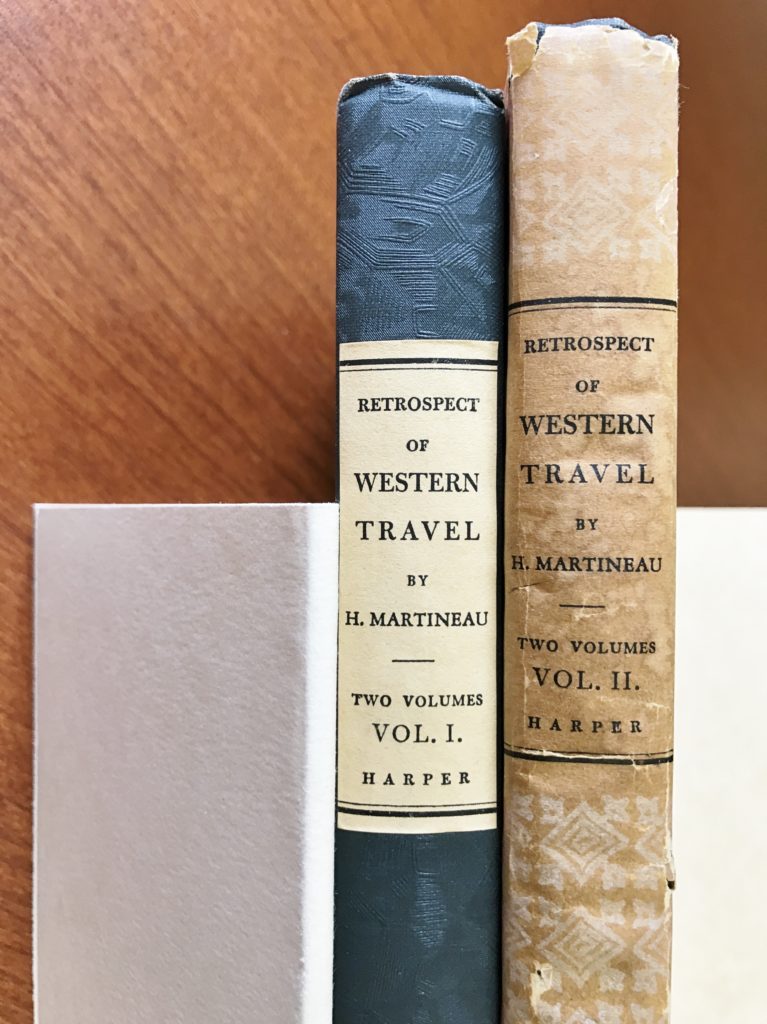
I “liked” her post, made a comment about invisible ink, and turned my attention to the volumes on my book truck. At the moment those books are some of the approximately 750 titles (1,000 volumes) in the bindings collection put together by the late antiquarian bookseller Kenneth G. Leach and purchased by the Society in 1989. Other than some annotations on the slips accompanying each title, made by former AAS president Marcus A. McCorison and the acquisitions staff soon after the collection arrived in Worcester, these books have remained virtually untouched until now. Support from AAS members William S. Reese and Michael Zinman has now made it possible for us to give the collection visibility in the online catalog.
In a great bibliographic coincidence, on the same day I read and commented on the above post, my book truck full of this collection held a two-volume set, in dust jackets, purporting to be Harriet Martineau’s Retrospect of Western Travel (London: Published by Saunders and Otley. New York: Sold by Harper & Brothers, 1838). When I opened the first volume I saw the title page, the first page of text, and page 15. The rest of the first volume and all of the second volume consisted entirely of blank pages.
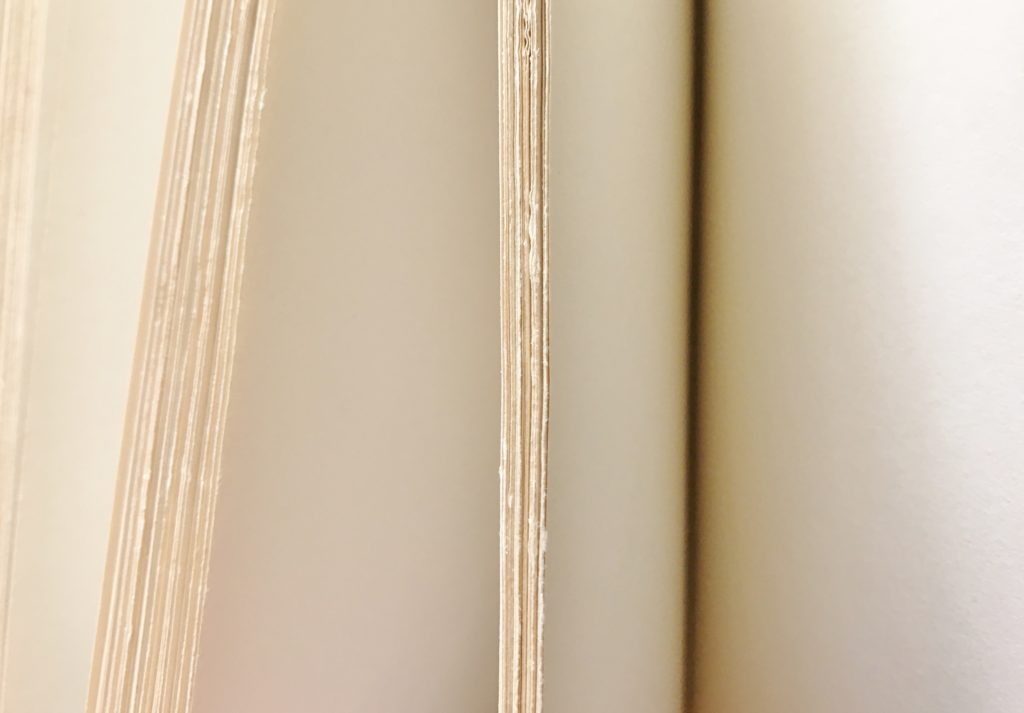
I contacted Brenna and after a series of exchanges we agreed that these were intentionally published with blank pages, but probably not as publishers’ dummies. So what then?
When I compared these volumes with our copy of Martineau’s 1838 edition, it was obvious that the Leach copy was not published in 1838. The three pages of text are photographically reproduced and the paper is of a distinctly later production, though how much later I wasn’t sure.
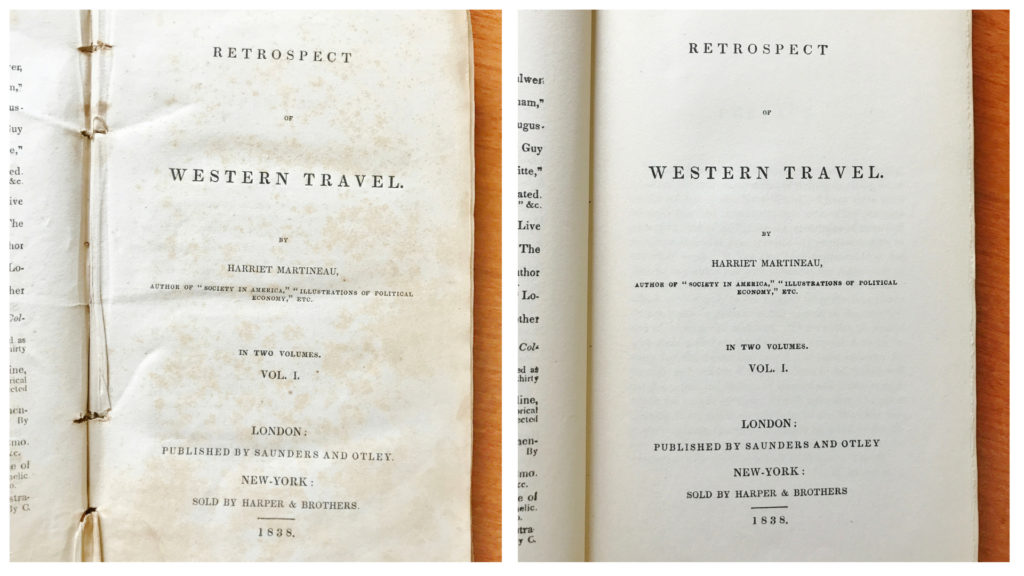
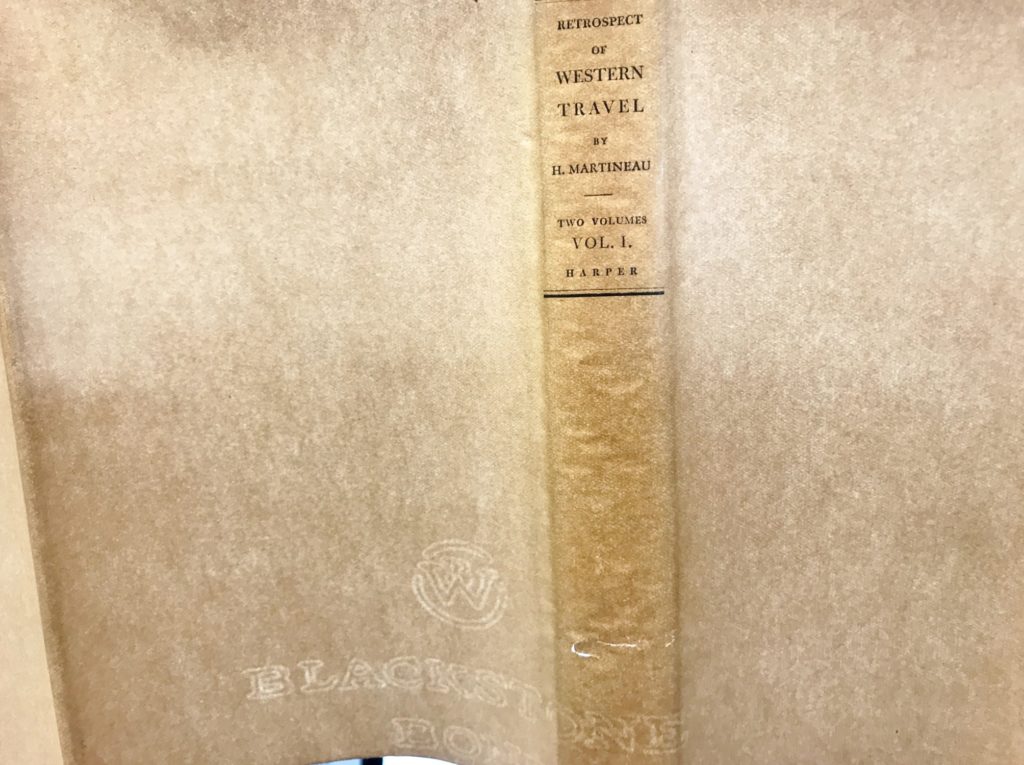
The next week, I showed the volumes to Lauren Hewes, AAS curator of graphic arts, who noticed a watermark in the book jacket for Blackstone Bond paper, which was produced by the Byron Weston Company in Dalton, Massachusetts. A bit of googling and I learned that this paper was introduced in 1923. Armed with this information I created a brief catalog record. So while my work is done, the other half of the mystery remains unanswered. I can’t help but think that there are people who have seen these kinds of books before and know why they were published, and perhaps by whom. Through the power of social media perhaps we’ll get an answer.
PART II, by Elizabeth Watts Pope, Curator of Books
Few things pique the curiosity of a rare book person more than a good biblio-mystery. So when I heard about the remarkable coincidence described in Doris O’Keefe’s part above, I was intrigued and wanted to learn more about the copy of Harriet Martineau’s Retrospect of Western Travel in the Leach bindings collection at AAS.
I picked up the investigation where my colleagues had left off. Thanks to their research into the watermark, I knew this photo-reproduced book was published sometime after 1923, but it remained a mystery exactly who issued it, when, and why it would be issued almost entirely blank. (Salesman’s sample books or canvassing books were usually issued with blank pages, but they usually had a more substantial portion of the text to appeal to potential buyers and the blank pages were usually lined to be filled in with subscribers’ names.)
To further complicate matters, the fact that this photo-reproduced edition of Retrospect of Western Travel was published after 1923 presented two problems:
- Twentieth-century publishing history is not our area of expertise at AAS—you might say everything after 1900 is a bit of a blur to us.
- Most post-1923 imprints are not freely available online due to potential copyright issues. This greatly limited the utility of that essential first step of all modern sleuthing—a keyword search in Google.
My first guess was perhaps this photo-reproduction was published to mark the centennial of Martineau’s work in 1938. I tried searching Google and various databases for keywords “1938” and “Martineau.” When this hypothesis didn’t pan out, I turned to that refuge of librarians everywhere: WorldCat. (WorldCat is a “master” catalog that includes library resources from around the world maintained by the Online Computer Library Center, or OCLC.)
I searched OCLC’s WorldCat for “Retrospect of Western Travel” and browsed the results for twentieth-century dates of publication. The best lead I came out with was a rather nondescript catalog record for a “Facsimile reprint, 1942.”
With a more definite date to go by, I now searched in Google for “Retrospect of Western Travel” and “1942” and was able to confirm the publication of the facsimile edition with a number of articles in periodicals, such as this Publishers’ Weekly article:
“In selecting for facsimile publication Harriet Martineau’s diary of American travel in 1834, ‘Retrospect of western travel,’ Harper & Brothers has made a particularly welcome choice of a book to help mark the firm’s 125th anniversary. Harper’s facsimile, boxed at $4, is a faithful reproduction … of the two handy volumes issued in New York by Harper & Brothers in 1838.” –The Publishers Weekly, v. 142, p. 2137, 1942
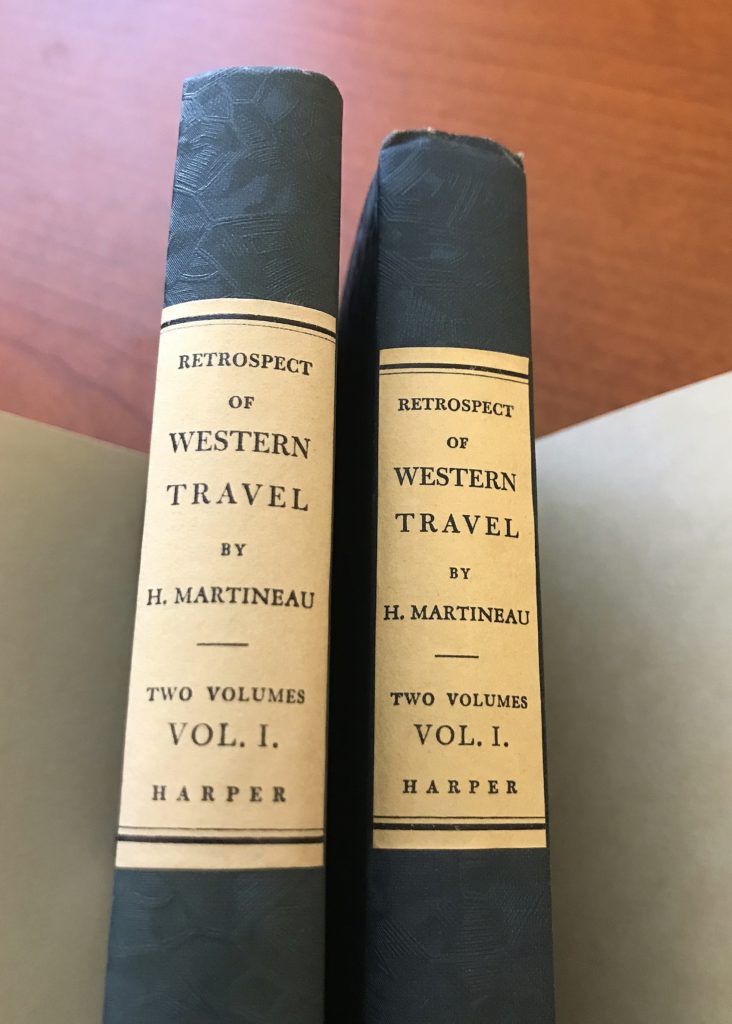
With the date and publisher now established, I was able to locate a complete copy of the two-volume set with the full text on eBay. AAS acquired it in order to determine definitively that it has the same binding, book jacket, and printed spine label as the copy with blank pages already at AAS in the Leach bindings collection (which it does).
Reviewers in the 1940s had commented on how closely the facsimile copied the original, so the Leach bindings copy at AAS could very well be a binding dummy to demonstrate how exact a replica it would be. This is our current best guess as to what we have at AAS, though this doesn’t help explain the original example of The Spy at the Beinecke. Was this a common practice of the time? Do other examples exist? Perhaps you have the clues to help us clear up the remaining questions of this biblio-mystery.

nice website, keep on writing..
Hello Doris,
I read, with interest, your pursuit of information re. Martineau’s Retrospect of Western Travel and the pedigree of volumes you recently received. I am involved in evaluating and appraising the contents of what the Multnomah County Library has decided not to keep within its system from its John Wilson bequest. This bequest in 1905 was major and marked a great change in that the Library Association of Portland became a public library as one of the conditions of acquiring it, lo many years ago.
As a part of this collection, we have what I think is the original first state of Retrospect of Western Travel in three volumes. Unlike the title page you have shared for your original copy, ours lists only the London publisher, Saunders and Otley, Conduit-Street, 1838 at the foot of the title page.
Normally, the difficulty I run into with these books is in deciding how much to devalue them based upon the number of library markings, trimming, punching or rebinding. I can’t compare them to a copy that has been in a private home and had every courtesy through the years. But I haven’t been able to find any copies of this original 3-volume set on offer anywhere. Do you have any feel for what they might be worth? Of course you can’t put your hands on them, but I can send a few photos. They are hardbound in 3/4 calf over marbled paper with two red labels with gilt titling and decoration on the spine. The heads of the textblocks are darkened; I can’t tell if they were stained . . . doesn’t look like they were ever gilded. There is a library bookplate, John Wilson Collection bookplate, and a terrible electronic sticker on the front pastedown. Some wear on the leather at leading corners and along the bound edge. White Dewey number on spine. Multnomah County Library facing mark sticker at the top of the front cover. I appreciate any suggestions, however small, that you could offer. And thank you for a thoroughly enjoyable article! Best wishes from Portland, Oregon
very good blog, very useful for the information and the structure of the writing style, I will come back again for more information